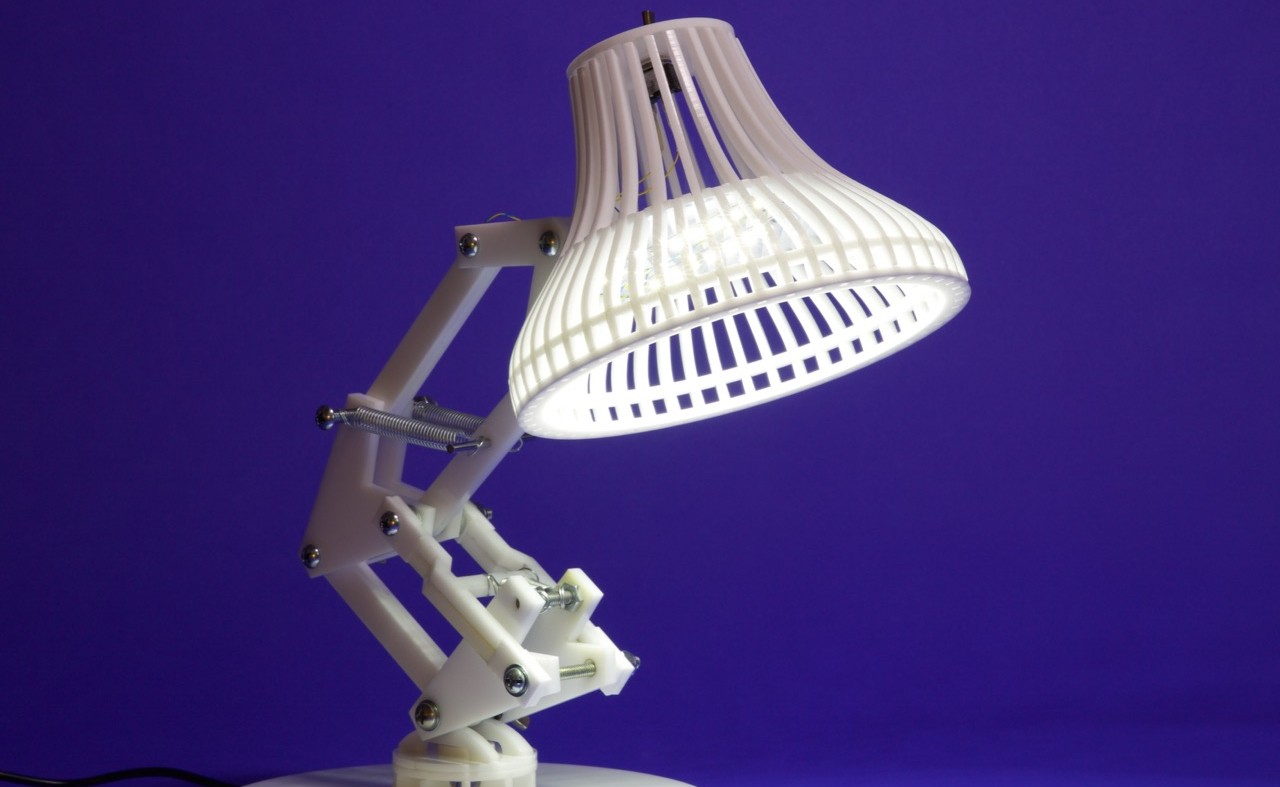
If you’ve ever seen a Pixar movie, then you’re probably familiar with the bouncing little lamp that squashes the ball during the title sequence. This lamp, called “Luxo Jr.”, was the main character of one of Pixar’s first short films, and has since become an iconic symbol of Pixar movies. There’s even a 15-foot-tall version of Luxo Jr. outside Pixar’s main atrium.

In this project, you’ll build your very own Luxo Jr. lamp. This lamp has two white LED strips as its light source, and is a perfect size for your desk or study area. A small toggle switch on the top turns the light on (I used a toggle switch because I never really liked the twisty ones on most lamps). The body of the lamp is made from laser cut acrylic pieces, so you’ll need access to a laser cutter for this project.

To make the lamp, first I designed everything in SolidWorks to get a sense of how the mechanism would work. I took care to only design parts that could be cut with a laser cutter (i.e.: making every part out of a flat sheet, and only using standard thicknesses for parts, in this case ¼” and ⅛“). I also accounted for the kerf of the laser in these files.
Then I exported .dxf versions of each part and brought those into Illustrator where I copied them accordingly and nested them efficiently. I’ve included the Illustrator files that can be sent directly to the laser cutter, and I’m also providing the SolidWorks model and .dxf files in case anyone wants to tweak or customize the design.

As always, if you make this project please let us know how it went in the comments section below!
DOWNLOAD LINK: Luxo_Lamp_Files



